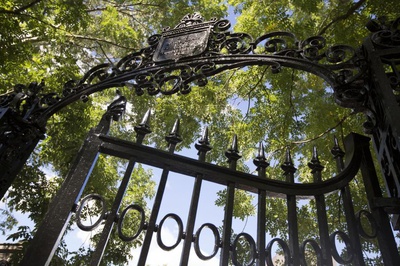
News
Harvard Researchers Develop AI-Driven Framework To Study Social Interactions, A Step Forward for Autism Research

News
Harvard Innovation Labs Announces 25 President’s Innovation Challenge Finalists

News
Graduate Student Council To Vote on Meeting Attendance Policy

News
Pop Hits and Politics: At Yardfest, Students Dance to Bedingfield and a Student Band Condemns Trump

News
Billionaire Investor Gerald Chan Under Scrutiny for Neglect of Historic Harvard Square Theater
Union Urges Coeducation For Harvard and Radcliffe
Propose Measure to Preserve Traditions
Merging of Harvard and Radcliffe classes in both a wartime move and long-term project has been urged by the Harvard Teachers' Union as one of a series of measures to insure a continuation of liberal education here throughout the war.
According to the Union, the move would have the immediate effect of saving a great deal of the time now wasted in repeating lectures and section meetings. It would also tend to raise the standards of instruction at Radcliffe, they say, since many Harvard teachers are unenthusiastic about their feminine classes and tend to prepare loss and experiment.
With a sweeping drop in male enrollment imminent, the merger would seem to be an ideal way to keep a liberal arts curriculum in existence at Harvard and Radcliffe buildings and would be completely coeducational, except that large lecture courses such as History 1, which full lecture halls in both schools, might remain divided.
As a basic reason beyond the immediate improvements which would follow the move, members state that to deny women equal education is reactionary and that coeducation is superior as a general policy.
Want to keep up with breaking news? Subscribe to our email newsletter.
From Our Advertisers

Over 300+ courses at prestigious colleges and universities in the US and UK are at your disposal.

Where you should have gotten your protein since 1998.

Serve as a proctor for Harvard Summer School (HSS) students, either in the Secondary School Program (SSP), General Program (GP), or Pre-College Program.

With an increasingly competitive Law School admissions process, it's important to understand what makes an applicant stand out.

Welcome to your one-stop gifting destination for men and women—it's like your neighborhood holiday shop, but way cooler.

HUSL seeks to create and empower a community of students who are seeking pathways into the Sports Business Industry.
